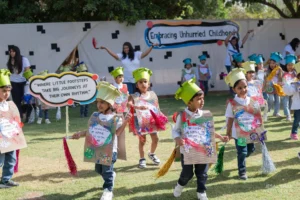Building upon the foundational understanding of how Western themes influence modern entertainment, it becomes essential to explore the deeper layers where archetypes—those universal symbols rooted in Western mythology and literature—play a pivotal role. These archetypal characters and narratives transcend mere entertainment, shaping cultural perceptions and collective consciousness across diverse societies worldwide. This exploration reveals not only how Western archetypes have been adapted globally but also how they serve as tools for cultural dialogue, identity reinforcement, or even cultural critique.
1. Introduction: From Western Themes to Archetypal Symbols in Global Media
Western motifs have long served as a rich tapestry of storytelling, evolving from broad themes like heroism, justice, and individualism into specific archetypes such as the hero, the villain, the mentor, and the rebel. These archetypes are deeply rooted in Western mythology, from Greek gods to biblical narratives, and have been perpetuated through centuries of literature, theatre, and cinema. As media globalization accelerates, these symbols have become part of a shared cultural vocabulary, influencing how societies construct their own stories and identities.
2. The Origins and Evolution of Western Archetypes in Media
a. Historical Roots of Western Archetypes in Mythology and Literature
Western archetypes trace their origins to ancient mythologies—Greek heroes like Hercules embody strength and perseverance, while tragic figures like Oedipus highlight themes of fate and hubris. Medieval literature, such as King Arthur and the Knights of the Round Table, further cemented archetypal roles of noble heroism and chivalry. These enduring symbols have been transmitted through centuries, shaping Western storytelling conventions.
b. Adaptation and Transformation in Contemporary Storytelling
Modern media reinterprets these archetypes to fit contemporary narratives. For instance, in superhero comics and films, characters like Batman or Wonder Woman embody the hero archetype but are infused with modern complexities—psychological depth, moral ambiguity, and social justice concerns. Such adaptations demonstrate the flexibility of archetypes and their capacity to reflect societal evolution.
c. Cross-Cultural Reinterpretations of Western Archetypes
When Western archetypes are introduced into non-Western contexts—such as Asian cinema or African literature—they are often blended with local mythologies. An example is the reinterpretation of the ‘hero’ archetype in Bollywood films, where characters may incorporate traditional cultural values alongside Western heroic traits, creating hybrid narratives that resonate with diverse audiences.
3. Archetypes as Cultural Narratives: Beyond Stereotypes
a. Reinforcing or Challenging Cultural Identities
While archetypes can reinforce cultural norms—such as the virtuous hero embodying societal ideals—they can also challenge them. For example, antiheroes like Walter White in Breaking Bad subvert traditional hero archetypes, prompting audiences to question moral standards and cultural expectations.
b. Nuanced Portrayals in Diverse Media Landscapes
Contemporary media often presents archetypes with layered personalities and conflicting motives, fostering a more nuanced understanding. The character of Katniss Everdeen in The Hunger Games exemplifies a complex heroine who embodies resilience and moral ambiguity, thus expanding archetypal boundaries.
c. Case Studies of Archetypal Characters Shaping Perceptions
| Character | Archetype | Cultural Impact |
|---|---|---|
| Iron Man (Tony Stark) | The Inventor/Rescuer | Promotes innovation and individualism, inspiring entrepreneurial spirit globally |
| Mulan | The Warrior/Protector | Challenged gender stereotypes and emphasized cultural pride in China and beyond |
4. Psychological and Sociological Dimensions of Western Archetypes
a. Impact on Audience Psychology Across Cultures
Research indicates that archetypes evoke subconscious associations, influencing perceptions and emotional responses universally. For example, the ‘hero’ archetype often elicits admiration and aspiration across cultural boundaries, fostering a sense of shared human experience.
b. Archetypes as Tools for Societal Values and Moral Lessons
Media leveraging archetypes often serve as moral compasses, illustrating virtues like courage, loyalty, and justice. The superhero genre, for instance, exemplifies ideals of heroism and sacrifice, reinforcing societal values.
c. Media’s Role in Reinforcing or Deconstructing Archetypes
While traditional media has reinforced archetypes, contemporary narratives increasingly deconstruct them to address complexities and contradictions. This evolution allows audiences to engage with archetypes more critically, fostering cultural reflection and dialogue.
5. The Globalization of Western Archetypes: Cultural Borrowing and Hybridization
a. Integration into Non-Western Media
Western archetypes have been seamlessly integrated into global media, from Japanese anime featuring Western hero motifs to African films depicting Western-style antiheroes. This process often involves adaptation to local values and storytelling conventions.
b. Emergence of Hybrid Archetypes
Hybrid archetypes blend Western symbols with indigenous cultural elements, leading to new narrative forms. An example is the ‘Shonen hero’ in manga, which combines Western adventure archetypes with Eastern spiritual themes.
c. Cultural Implications
This dissemination fosters intercultural understanding but also raises concerns about cultural homogenization. The widespread adoption of Western archetypes can overshadow local storytelling traditions if not balanced carefully.
6. Challenges and Critiques of Western Archetypes in a Globalized World
a. Risks of Cultural Homogenization
An overreliance on Western archetypes may lead to the erosion of local narratives and identities, reducing cultural diversity. For example, Hollywood’s dominance can marginalize indigenous storytelling forms.
b. Debates over Cultural Appropriation and Authenticity
The borrowing of archetypes raises questions about respect and authenticity. When Western symbols are adopted without understanding their cultural significance, it can lead to misrepresentation and cultural insensitivity.
c. Perpetuation of Stereotypes and Biases
Some archetypes carry embedded stereotypes—such as the ‘savage’ or ‘evil outsider’—which can reinforce biases if not critically examined. Media creators are increasingly aware of this, working towards more balanced portrayals.
7. The Role of Media Platforms in Shaping Archetypal Narratives
a. Influence of Streaming Services and Global Franchises
Platforms like Netflix and Disney+ distribute archetypal stories worldwide, often shaping global perceptions of Western narratives. Examples include Marvel’s superhero universes and fantasy epics like The Witcher.
b. Media Algorithms and Audience Engagement
Algorithms prioritize content with recognizable archetypal elements, reinforcing their prominence. Audience preferences for familiar archetypes foster a cycle of repeated themes and characters.
c. Opportunities for Diverse Representations
While dominant archetypes persist, digital platforms also offer space for alternative and marginalized archetypal portrayals, encouraging cultural diversity in media narratives.
8. From Archetypes to Cultural Dialogue: Fostering Cross-Cultural Understanding
a. Using Archetypes as a Bridge for Intercultural Exchange
Shared archetypes like the hero or the trickster serve as universal symbols that can facilitate cross-cultural storytelling and dialogue, promoting mutual understanding and empathy.
b. Promoting Nuanced and Respectful Portrayals
Encouraging creators to depict archetypes with cultural sensitivity helps avoid stereotypes, fostering respectful representations that honor diverse traditions.
c. The Future of Archetypal Narratives
As global media continues to evolve, archetypes may serve as tools for fostering a more interconnected world—highlighting shared human values while respecting cultural uniqueness.
9. Returning to the Parent Theme: The Influence of Western Themes on Modern Entertainment
a. Deepening Understanding of Western Influence through Archetypes
Recognizing the role of archetypes enriches our comprehension of Western motifs’ pervasive presence in global media, revealing how they shape narratives that resonate universally. This layered understanding helps contextualize Western influence within broader cultural dynamics.
b. Cultural Layers within Western Motifs and Archetypes
Western motifs are not monolithic; they encapsulate diverse cultural influences and adaptations. Appreciating these layers enhances our perspective on how Western storytelling continues to evolve and influence worldwide media landscapes.
c. Ongoing Evolution of Western Media Influence
As global interactions deepen, Western archetypes are likely to undergo further transformation—becoming more hybridized, nuanced, and dialogic—thus fostering a richer, more complex cultural exchange that extends beyond entertainment into societal values and identities.


